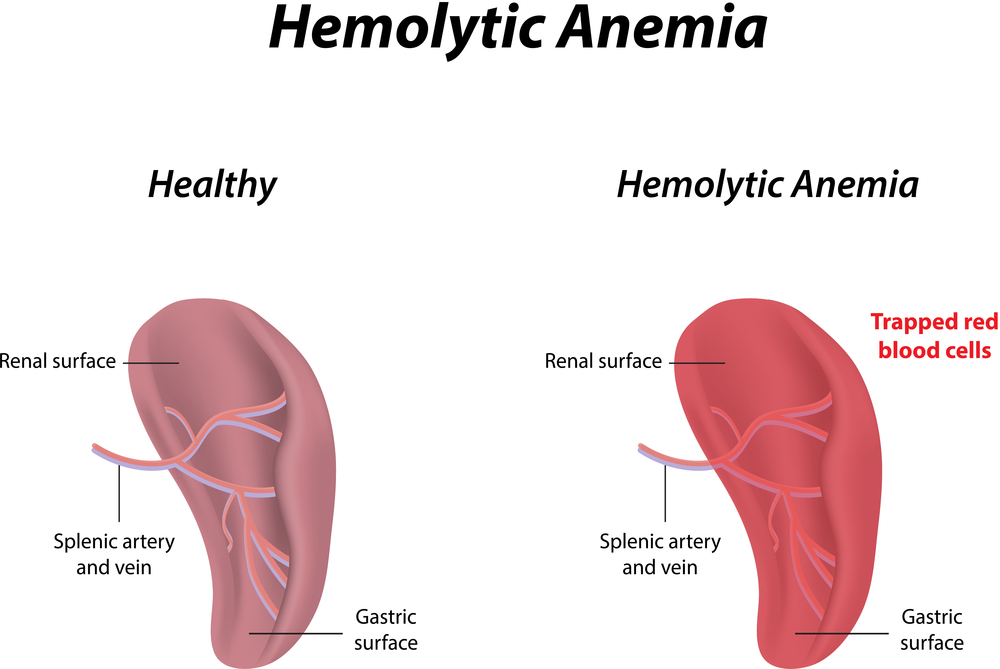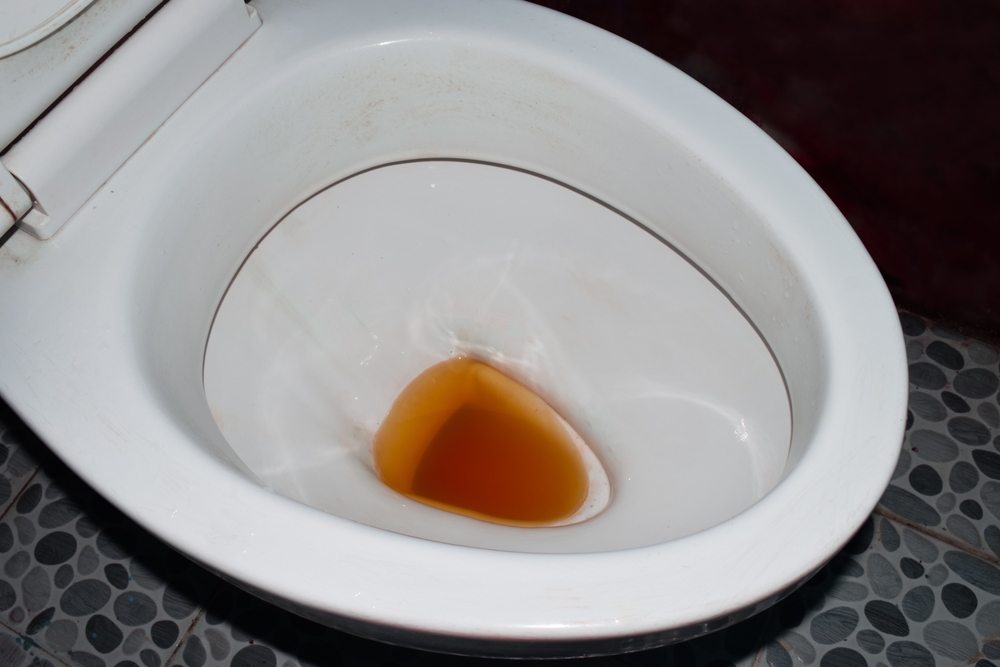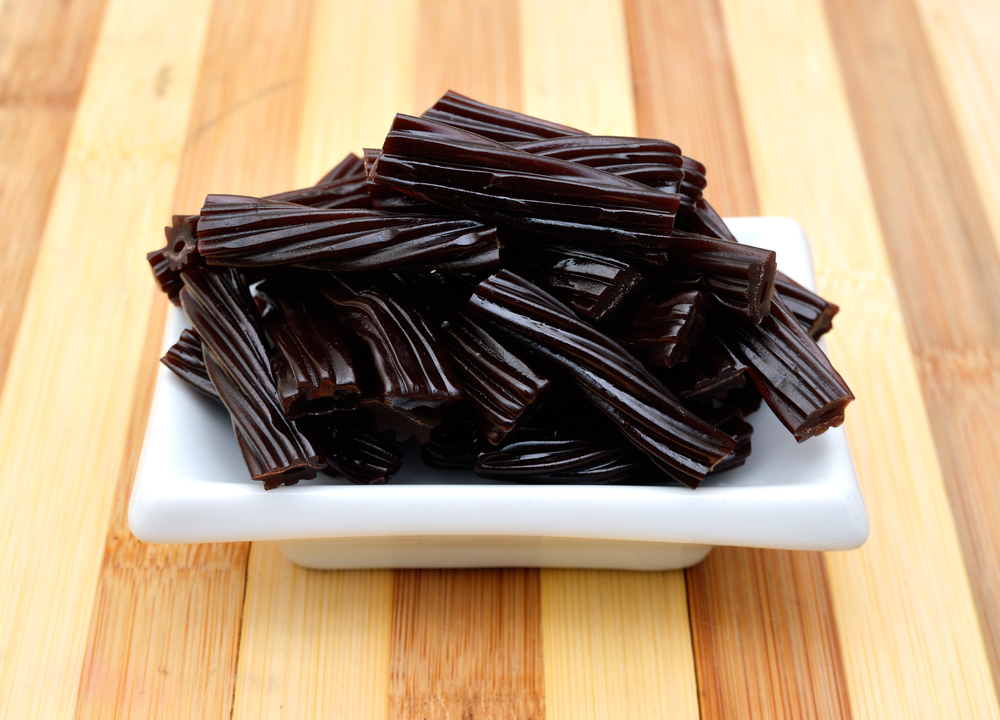What's On This Page?
ToggleWhat Color is Your Pee?
It’s one of those things you don’t even pay attention to until suddenly one day it looks different. I’m referring to urine, and the normal color is pale yellow. The yellow pigment is called “urochrome” and if it’s concentrated, your urine is brighter yellow. If you’re well hydrated, the urochrome is more dilute, so you’ll see clear or light yellow urine. Still completely normal.
But a surprising number of foods, candy, medications, and disorders can impact urine color.
Here are causes for urine that can be every color of the rainbow:
Red or Pink
If you pee red, it’s frightening because your brain immediately thinks “Eek! Blood!” While blood can sometimes be seen in the urine (termed gross hematuria), pink or red-tinged urine is usually related to something you ate or took. For example, shots or high oral doses of Vitamin B12 (cyanocobalamin or methylcobalamin), or supplements of beetroot. If you order a beet salad or get a juice drink with beets, you might see pink in the potty.
If you just had two slices of rhubarb pie, or a dozen blackberries, these too can temporarily create pretty pink urine. Other common causes include bladder or kidney infections, or prostate cancer, however, in most cases, pink urine is nothing to be alarmed about. Just get it checked out if it persists beyond the beets!
Orange or Amber

The popular UTI (urinary tract infection) treatment called “phenazopyridine” will tint your urine orange. Another drug that can do it is the prescription blood thinner Coumadin (warfarin). Drinking a large carrot juice could do it too! It’s from a large amount of the natural pigment in carrots called beta-carotene. High doses of vitamin C can sometimes turn your urine orange as well.
One serious problem that can cause golden brown, dark, or reddish brown urine is rhabdomyolysis. This condition occurs from hemolytic anemia which means the breakdown of your red blood cells.
Take a moment to read my other article on HEMATURIA and find out the 10 Important Causes!
It’s associated with many popular drugs including some that reduce cholesterol. If you’re on a cholesterol med, and you have tinged urine, it’s dangerous, so see a doctor immediately. It can happen as an unusual complication of Hashimoto’s thyroiditis. I am an expert in thyroid illness so I want you to be aware, but is very rare as you can see in this CASE STUDY.
You may be wondering about Graves’ disease too, and that does not change urine color. However, people with this condition can have their kidney’s affected, causing more frequent urination, but not a change in color (so long as you remain properly hydrated). If the topic of autoimmune thyroid illness interests you, read one of these two articles:
10 Key Symptoms of Hyperthyroidism: Understanding the Overactive Thyroid
10 Essential Nutrients Depleted in Hashimoto’s and How to Restore Them
Yellow or Brown
Yellow is normal, but bright neon yellow is not. Still, it is harmless. If you take supplements of riboflavin (Vitamin B2) or a multivitamin that contains some riboflavin, you will pee neon yellow! You’re not dying, so don’t panic.

Now if your urine is dark yellow, it could be due to dehydration. Go drink more water and see what happens, as your urine should go back to normal within a few hours. However, dark urine that is unusual, or in excess, could indicate liver disease. Specifically, the presence of bile makes its way to the urine and tinges it darker yellow, brown, or orange.
You might be wondering what bile is. It is simply a greenish-brown fluid that is secreted by your liver and then stored in your gallbladder. Your gallbladder releases it to help digest food, specifically fatty foods. So if your liver makes it in excess, and it gets inside your urine, it causes your urine to darken. Jaundice (yellow tinge of the skin and eyes) is also associated with excessive bile.
Certain medications can also turn your urine dark yellow, including methocarbamol, nitrofurantoin, laxatives (cascara or senna) chloroquine, or primaquine. The effect of these medications is temporary.
Green

Did you eat a bag of black licorice? It will make you pee green! So will asparagus, and your urine will have a weird, unpleasant smell too.
Maybe you have a UTI? If your urine is dark, cloudy yellowish-green, you may have developed a UTI, a very common cause, so see your physician for treatment. You might also need a doctor if you have a pseudomonas or proteus bladder infection, which makes urine take on a greenish hue.
Vivid green urine is highly unusual unless you’ve been sedated for surgery or a procedure, like a colonoscopy or a biopsy. Propofol (a.k.a. the Michael Jackson drug), is the popular short-acting sedative that puts you under, and it can tinge pee green; it has also been associated with blue, pink, and white urine, but it’s most often associated with green.
Another medication can cause green urine and it’s called promethazine. This is a prescription drug used for nausea, vomiting, sedation and other things. The since-recalled acid blocker cimetidine was another offender.
True green pee could occur from taking the oral drug ProSed DS prescribed for UTIs or cystitis. This medication contains methylene blue and the blue dye combines with your yellow urine morphing your pee into a pretty shade of green.
Every now and then, in nursing homes, I have seen patients on enteral tube feedings experiencing green urine. This is likely from their nutrition cans of food that contain FD&C Blue #1 which combines with yellow urochrome, to make green urine. (It’s harmless.)
Blue
This one would alarm me personally, even though I know that a number of medications produce blue including Elavil (amitriptyline), Indocin (indomethacin), and possibly Diprivan (propofol). A medical condition called familial benign hypercalcemia, a rare inherited disorder is sometimes also known as “blue diaper syndrome” because children with the disorder have blue urine.
Purple
Purple urine is almost always associated with people who have catheters and then get a UTI. It’s benign but scary looking and it’s termed Purple Urine Bag Syndrome.
How does it occur?
There are a lot of steps, starting with L-tryptophan in the gut, which gets converted down a pathway in the liver and kidneys, ultimately being transformed by gram-negative bacteria in the urine. Two pigments are formed, one is indigo and one is red. These then combine with substances in the plastic catheter. The result is purple urine and it’s pretty dramatic to see. If you visit a loved one in the nursing home and see this, all that needs to be done to cure it is a treatment of antibiotics and a catheter change.
White
White urine goes by a couple of names. Some doctors call it albuminuria and some call it chyluria. Chyluria is a medical condition that causes chyle to wind up in the urine stream, resulting in milky white urine. Whatever you want to call it, the urine appears very cloudy and white.
Two of the most frequent causes are kidney stones or high calcium excretion (hypercalciuria) or high phosphorus in the urine (phosphaturia). You might also have a severe kidney or bladder infection. Sorry for the visual, but the white might be happening because you’re peeing out pus! Your doctor should be consulted for white milky urine.
Black Pee?
Black urine is sometimes associated with melanoma. It can occur when red blood cells are being destroyed at a dangerously rapid pace, so you can see it sometimes when you treat a person for malaria. The condition is called “blackwater fever.” The red blood cells burst open and release their hemoglobin, and these get into the urine. It’s called hemoglobinuria. It needs medical assistance and is considered an emergency.
So I know that paying attention to the color of your urine probably isn’t at the top of your priority list, but it’s good to know what’s going on if the color is off. Maybe it’s nothing, related to something you consumed or a medication you’re on… but it could be a clue your body is giving you that something is wrong.

Suzy Cohen, has been a licensed pharmacist for over 30 years and believes the best approach to chronic illness is a combination of natural medicine and conventional. She founded her own dietary supplement company specializing in custom-formulas, some of which have patents. With a special focus on functional medicine, thyroid health and drug nutrient depletion, Suzy is the author of several related books including Thyroid Healthy, Drug Muggers, Diabetes Without Drugs, and a nationally syndicated column.
